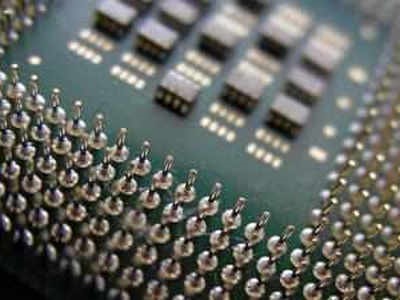-
HARARE: Shri Bramha Kumar appointed as the next Ambassador of India to the Republic of Zimbabwe - about 1 hour ago
-
LONDON: Indian-Origin Principal Wins UK Legal Challenge Over School Prayer Ban - 4 hours ago
-
TORONTO: Indian-Origin Doctor Needs ₹ 2 Crore For Legal Fees. Elon Musk Responds - 1 day ago
-
KINSHASA: India-Democratic Republic of Congo Foreign Office Consultations - April 21, 2024
-
LONDON: UK Court Allows Sale Of Nirav Modi’s Luxury London Apartment - April 21, 2024
-
TEHRAN: Travel advisory for Iran and Israel - April 20, 2024
-
LUXEMBOURG: Shri Saurabh Kumar concurrently accredited as the next Ambassador of India to the Grand Duchy of Luxembourg - April 20, 2024
-
WASHINGTON: Meet Jigar Shah, Indian-American Named In TIME Most Influential List - April 20, 2024
-
LONDON: What Impact Will New UK Family Visa Rule Have On Indians - April 20, 2024
-
TORONTO: The American Dream: Why Indian Students Continue To Flock Abroad - April 19, 2024
SEOUL: Samsung develops HKMG tech-based DDR5 memory
SEOUL: Samsung Electronics said it has
developed a high-capacity dynamic random-access memory (DRAM) module.
The South Korean tech giant said its 512-gigabyte (GB) Double Data Rate 5
(DDR5) module is the industry’s first DDR5 product to use a High-K Metal Gate
(HKMG) solution that reduces power leakage.
DDR5 is the next-generation standard for DRAM. Samsung said its latest DDR5
product delivers more than twice the performance of DDR4 at up to 7,200
megabits per second, which is enough speed to process two 30GB ultra-high
definition movies in one second.
Samsung said HKMG technology, which has been traditionally used in logic chips,
leverages a high dielectric material in the insulation layer to reduce the
leakage of current.
The HKMG process was adopted in Samsung’s GDDR6 memory in 2018 for the first
time in the industry before it was expanded to DDR5 memory, reports Yonhap news
agency.
Its DDR5 module with HKMG solution consumes 13 per cent less power than
products using existing process technology, according to Samsung, which makes
it suitable for data centers seeking energy efficiency.
“By bringing this type of process innovation to DRAM manufacturing, we are
able to offer our customers high-performance, yet energy-efficient, memory
solutions to power the computers needed for medical research, financial
markets, autonomous driving, smart cities and beyond,” said Sohn
Young-soo, vice president of DRAM memory planning at Samsung.
Samsung said it also applied through-silicon via (TSV) technology for the
latest DDR5 memory to stack eight layers of 16-gigabit DRAM chips for the
industry’s top capacity of 512GB.
The company was the first one to use the TSV solution in DRAM chips in 2014
when introducing server modules with capacities up to 256GB.
Samsung said it is currently sampling different variations of its DDR5 memory
products to customers for verification, adding that it is closely working with
partners, including Intel Corp., to expand their use.
“Intel’s engineering teams closely partner with memory leaders like
Samsung to deliver fast, power-efficient DDR5 memory that is
performance-optimized and compatible with our upcoming Intel Xeon Scalable
processors, code-named Sapphire Rapids,” said Carolyn Duran, vice
president and general manager of memory and IO technology at Intel.























